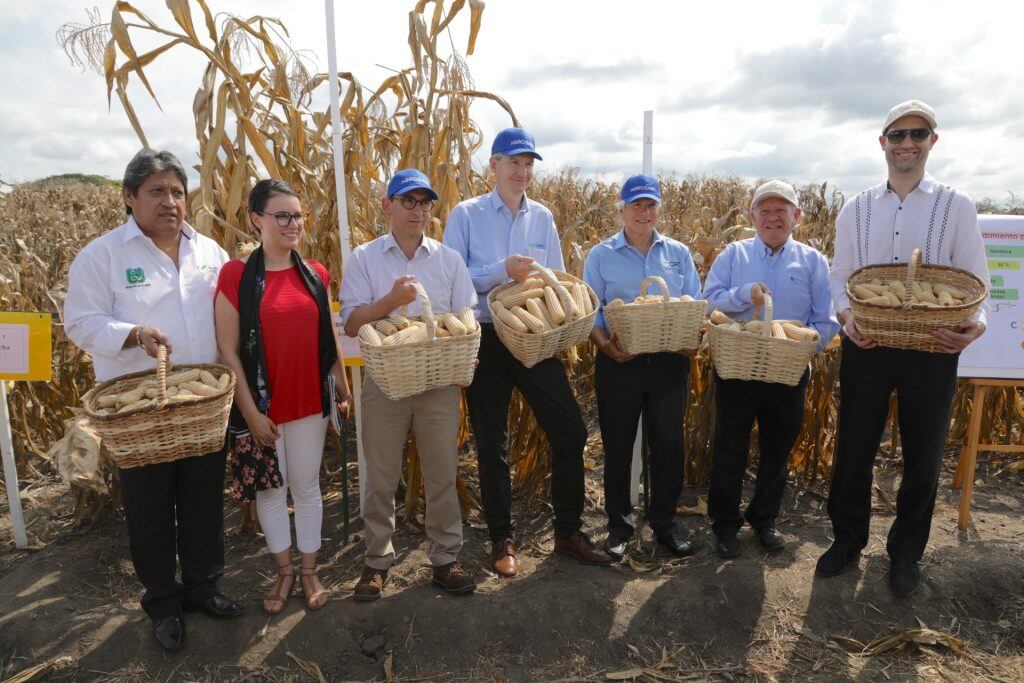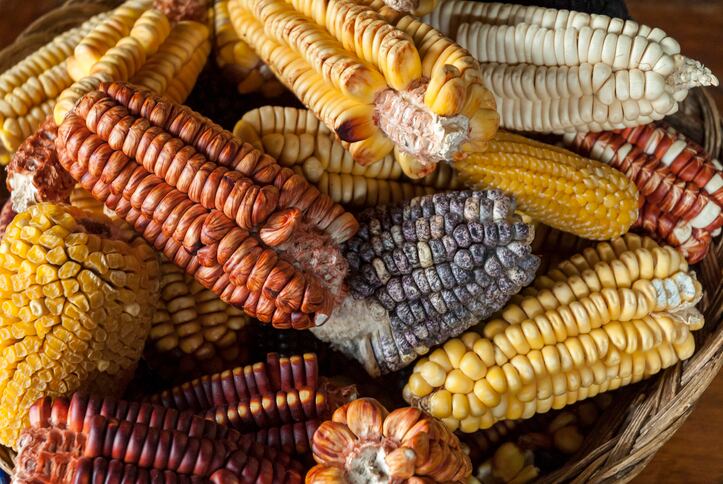The new seed varieties will be specially adapted to Colombia's farming conditions and changing climate.
The deal was signed last week by Colombian minister of agriculture and rural development Andrés Valencia and representatives from the three participating organizations: the International Center for Tropical Agriculture (CIAT), Colombian non-profit agricultural research center Agrosavia, and the Mexico City-headquartered International Maize and Wheat Improvement Center (CIMMYT).
The seeds will be developed using traditional plant breeding techniques by combining native Colombian maize with conventionally improved varieties and will be adapted to specific regions of Colombia.
“This first investment is a vote of confidence that partners hope will encourage additional investment,” said Bram Govaerts, director of innovative business strategies and regional representative for the Americas at CIMMYT.
Maize for Colombia

Agrosavia (previously known as Corpoica) will release the funds over the next five years. Farmers should be able to buy the first seed varieties in three years, Govaerts said.
Inspired by the success of a similar project in Mexico, MasAgro, Maize for Colombia is a national strategy to strengthen the country’s maize production chain. It aims to increase yields by promoting sustainable agri-technologies and boost food security by reducing reliance on maize imports.
Jointly led by CIMMYT and CIAT, Maize for Colombia also brings together 35 stakeholders from the government, farming and trade associations and research centers.
According to Govaerts, Agrosavia will release the varieties under a pre-competitive business model.
“This means that the local seed companies will have the opportunity to test the improved varieties at multiple sites and to choose the materials that better adapt to their local or regional markets,” he told FoodNavigator-LATAM. “Seed producers may further improve and adapt the new varieties to specific markets or needs.”
Increasing food security
Colombia’s productivity levels for maize are low compared to the main global producing countries, according to CIMMYT, with average yields sitting at around 3.6 tons per hectare compared to a world average of 5.4 tons per hectare.
It currently imports almost three quarters (74%) of the 6.4 million tons of maize it consumes each year, mostly from the US. What's more, domestic demand for corn is set to increase by 9% between 2018 and 2030 yet national maize production has a projected 6% annual growth rate, increasing Colombia's reliance on imports.
The low yields are mainly because Colombian farmers are not using improved or hybrid seeds.
“Most Colombian farmers grow either native maize landraces of great genetic value but low yield potential or older varieties that have become obsolete due to the effects of climate change, including the appearance of stronger strains of known and new diseases and pests,” Govaerts said.
However, multiple factors are at play.
“Conventional farming has degraded natural resources, especially soil nutrient content, so farmers struggle with diminishing productivity. Erratic weather and rain patterns produced by climate change also affect traditional production cycles and crop yields,” he said. “Access to extension services and expert advice is also limited.”
Multi-stakeholder efforts
Bio-fortification organization HarvestPlus, Colombia’s Federation of Cereals and Legume Growers (Fenalce) and the food industry branch of Colombia’s National Business Association (ANDI) have also taken part in the consultations for Maize for Colombia.
Together, the stakeholders have identified short, medium and long-term objectives, including improved seed adoption, improved farming and post-harvest practices, maize nutrition, sustainable and climate-ready farming practices, innovation networks, market access for farmers and rural infrastructure improvement.
The strategy is already bearing fruit. Last year CIMMYT, CIAT and biofortification association HarvestPlus launched a zinc-enriched maize variety to address zinc deficiency that affects 22% of the Colombian population.
According to Fenalce, the biggest maize-producing regions in Colombia are Córdoba, Sucre, and Bolivar (25.6%), Tolima, Huila (15.3%), Santander, Cesar (13.8%), and Llanos Orientales (9.6%).
Around 360,000 households grew corn last year and this is expected to increase to 800,000 by 2030.
Govaert said he expected 100% of farmers using mechanized farming techniques to plant improved maize seed by 2030, compared to 10% of farmers using traditional techniques.
What is sustainable intensification?
According to the United Nations’ Food and Agriculture Organization (FAO), transitioning to the sustainable intensification of agriculture is both possible and necessary.
“Sustainable intensification looks at whole landscapes, territories, and ecosystems to optimize resource utilization and management. Farmers must produce more from the same area of land and use fewer inputs while producing greater yields.”
This should be done by limiting chemical contamination and manage biodiversity, said the FAO.
Govaerts said: “It is a farming strategy that aims to make optimal use of resources and inputs to increase yields. It also aims to conserve resources essential to food production so that farmers may constantly achieve high and stable yields while generating a healthy diet.
“The strategy is based on the adoption of conservation agriculture, improved and adapted seed varieties, precision farming machinery for different production scales, integrated soil management, and nutrition practices, and post-harvest storage solutions. The model relies on extension services, monitoring and a constant exchange of information between farmers, technicians, and scientists so that farmers may produce more sustainably.”

